Salesforce Certified Tableau Desktop Foundations 온라인 연습
최종 업데이트 시간: 2025년11월17일
당신은 온라인 연습 문제를 통해 Salesforce Salesforce Certified Tableau Desktop Foundations 시험지식에 대해 자신이 어떻게 알고 있는지 파악한 후 시험 참가 신청 여부를 결정할 수 있다.
시험을 100% 합격하고 시험 준비 시간을 35% 절약하기를 바라며 Salesforce Certified Tableau Desktop Foundations 덤프 (최신 실제 시험 문제)를 사용 선택하여 현재 최신 320개의 시험 문제와 답을 포함하십시오.
정답:
Explanation:
When you drop a discrete field on Color in the Marks card, Tableau displays a categorical palette and assigns a color to each value of the field.
When you drop a continuous field on Color, Tableau displays a quantitative legend with a continuous range of colors.
Web version:
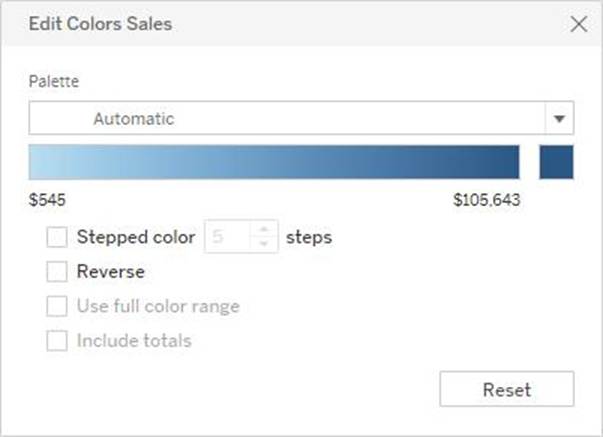
Desktop Version:
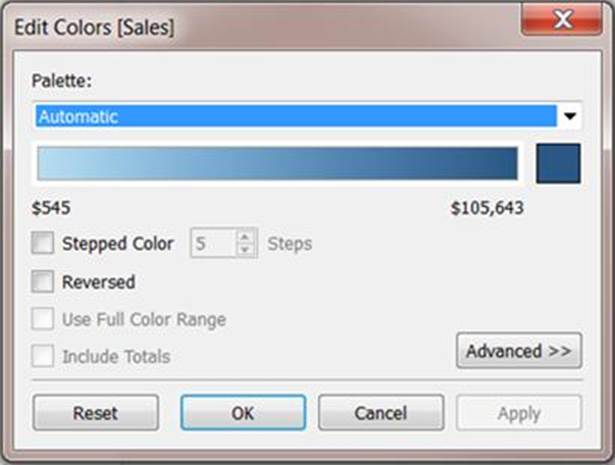
For more information about color palettes, see Color Palettes and Effects.
정답:
Explanation:
In Tableau, you can aggregate measures or dimensions, though it is more common to aggregate measures. Whenever you add a measure to your view, an aggregation is applied to that measure by default. The type of aggregation applied varies depending on the context of the view.
When you add a measure to the view, Tableau automatically aggregates its values. Sum, average, and median are common aggregations; for a complete list, see List of Predefined Aggregations in Tableau. The current aggregation appears as part of the measure's name in the view. For example, Sales becomes SUM(Sales). Every measure has a default aggregation which is set by Tableau when you connect to a data source. You can view or change the default aggregation for a measure―see Set the Default Aggregation for a Measure.
You can change the aggregation for a measure in the view from its context menu:
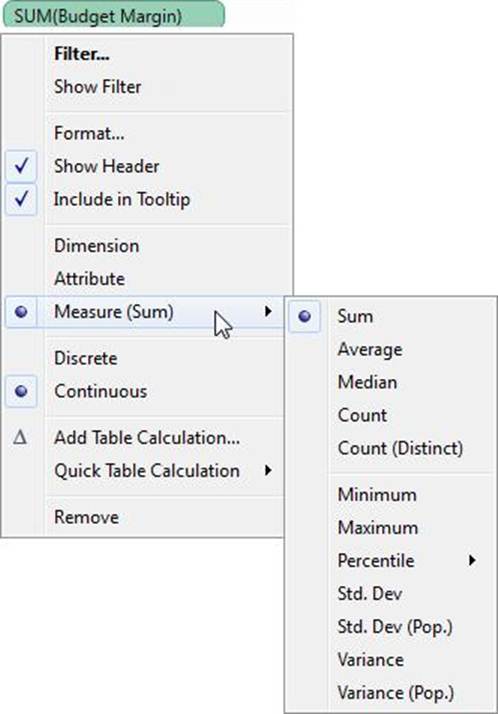
Reference: https://help.tableau.com/current/pro/desktop/en-us/calculations_aggregation.htm
정답:
Explanation:
According to the official Tableau documentation:
Tableau packaged workbooks have the .twbx file extension. A packaged workbook is a single zip file that contains a workbook along with any supporting local file data and background images. This format is the best way to package your work for sharing with others who don’t have access to the original data. For more information, see Packaged Workbooks.
Reference: https://help.tableau.com/current/pro/desktop/en-us/environ_filesandfolders.htm
정답:
Explanation:
The following options are available in the Device preview section when creating a Dashboard:

Reference: https://help.tableau.com/current/pro/desktop/en-us/dashboards_dsd_create.htm
정답:
Explanation:
Data blending is performed on a sheet-by-sheet basis and is established when a field from a second data source is used in the view. To create a blend in a workbook already connected to at least two data sources, bring a field from one data source to the sheet―it becomes the primary data source. Switch to the other data source and use a field on the same sheet―it becomes a secondary data source. An orange linking icon will appear in the data pane, indicating which field(s) are being used to blend the data sources.
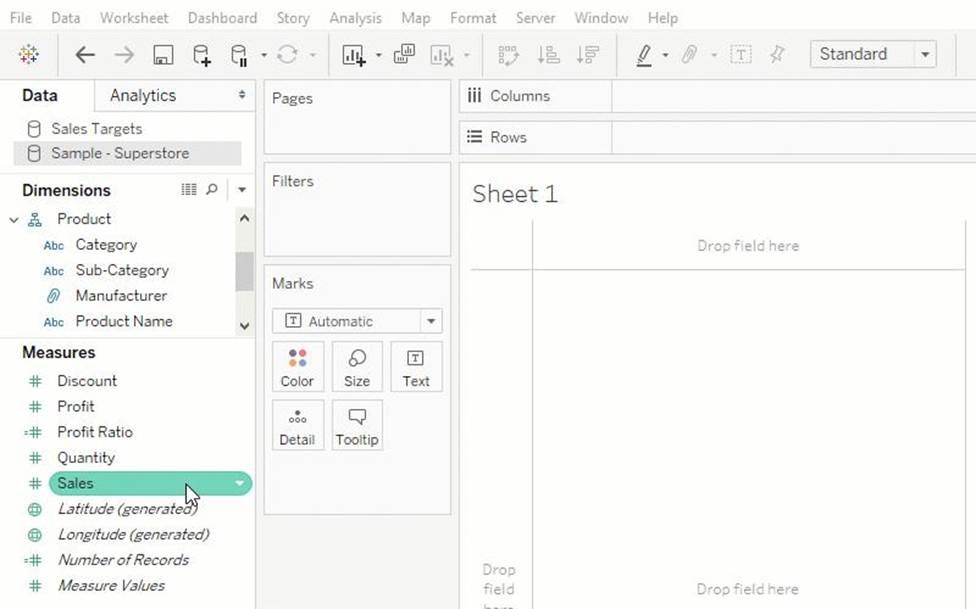
According to the official Tableau Documentation:
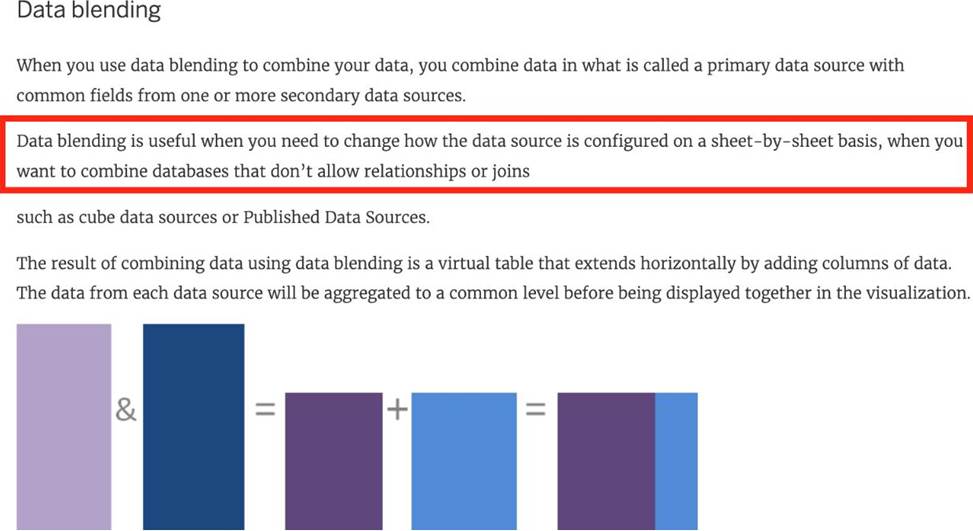
To read more about Data Blending, click on THIS link.
정답:
Explanation:
According to the official Tableau documentation:
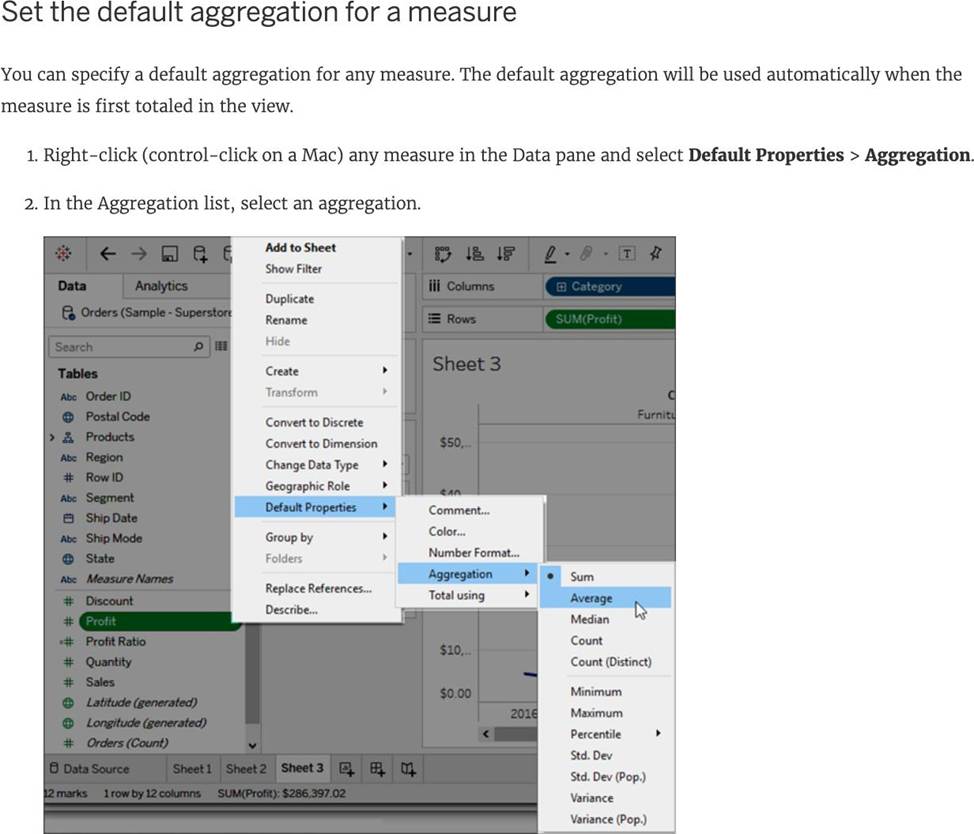
Dimensions don't have aggregation properties, and adding properties manually each time defeats the whole DEFAULT aggregation purpose. Window tab doesn't have any default aggregation option!
Reference: https://help.tableau.com/current/pro/desktop/en-us/datafields_fieldproperties.htm
정답:
Explanation:
Unioning is the correct answer!
From the official documentation:
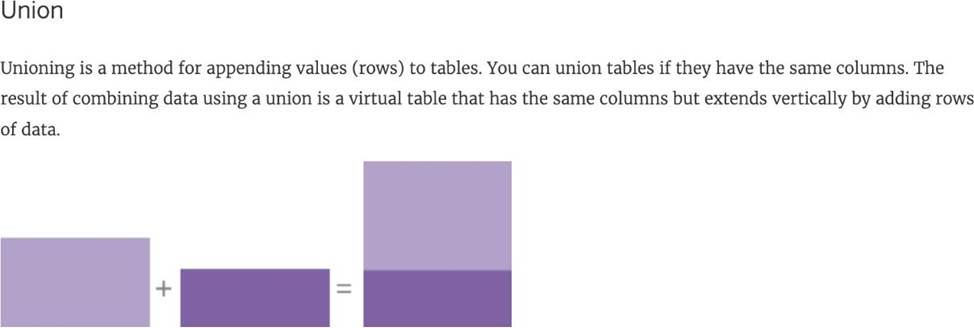
For example, suppose you have the following customer purchase information stored in three tables, separated by month. The table names are "May2016" , "June2016" and "July2016."
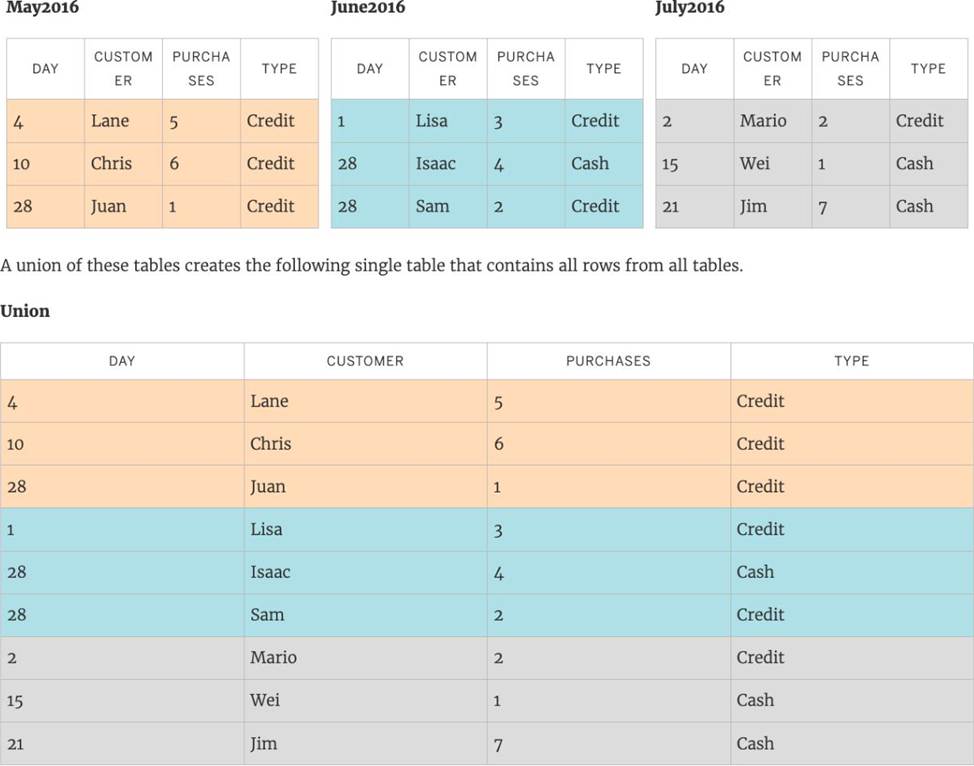
Reference: https://help.tableau.com/current/pro/desktop/en-us/union.htm
정답:
Explanation:
Using the Sample superstore as a reference:
1) Let's plot a bar chart showing SUM(Quantity) for each Segment:
2) Right click on the x-axis (Segment):
Notice we don't have an option to edit the axis, only header. This is because only continous values form the AXIS.
3) Similarly, right click on the y-axis (Quantity):
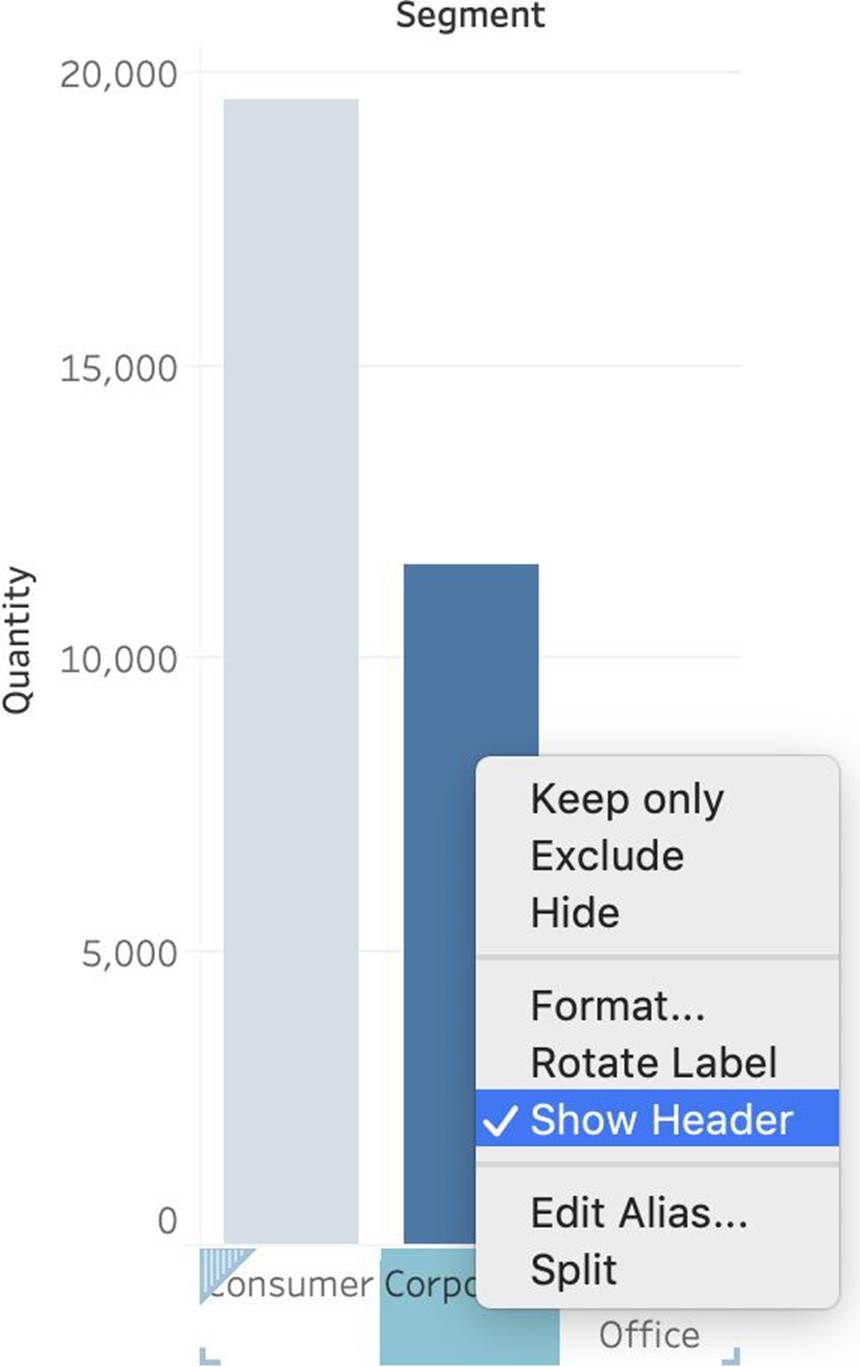
Now we have the option to edit BOTH the axis and the header.
Reference: https://help.tableau.com/current/pro/desktop/en-us/view_parts.htm
2) Right click on the x-axis (Segment):
Notice we don't have an option to edit the axis, only header. This is because only continous values form the AXIS.
3) Similarly, right click on the y-axis (Quantity):
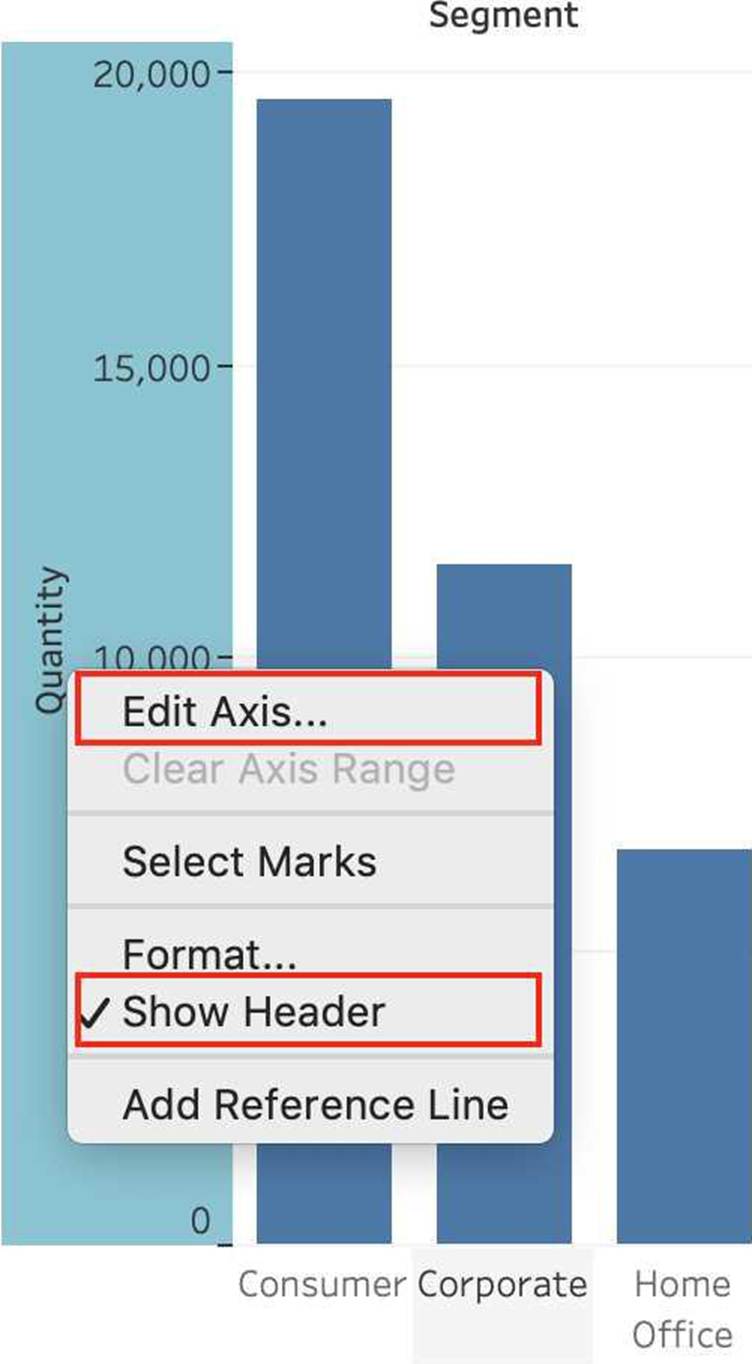
Now we have the option to edit BOTH the axis and the header.
Reference: https://help.tableau.com/current/pro/desktop/en-us/view_parts.htm
정답:
Explanation:
Tree maps size begins from maximum in top left to smallest in bottom right.
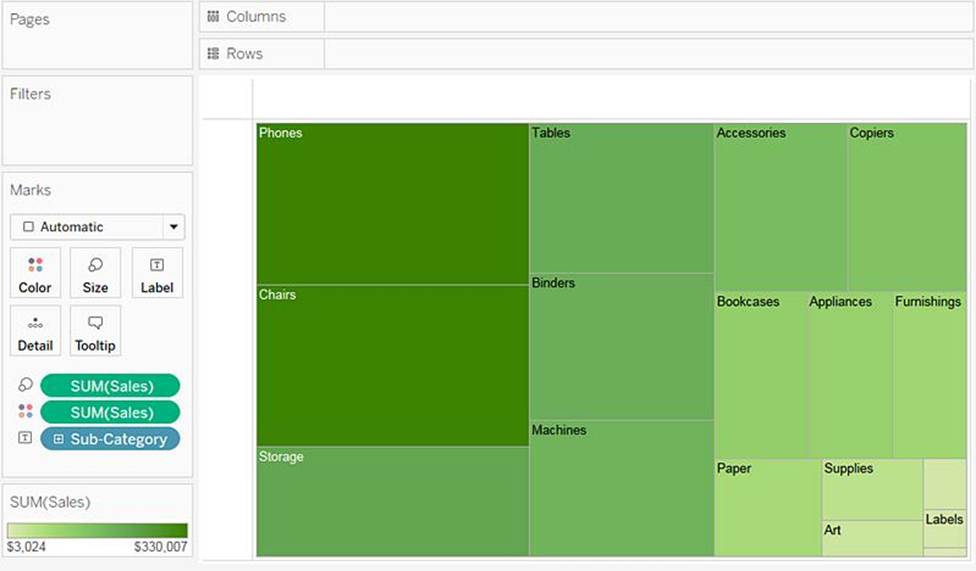
See below to learn how to create a TreeMap and add colours to it:
Reference: https://help.tableau.com/current/pro/desktop/en-us/buildexamples_treemap.htm
정답:
Explanation:
Your Tableau Desktop Specialist exam will be based on the 2020.1 version.
Set controls are a new feature introduced in the 2020.2 version, and hence is the correct answer - it is not a part of 2020.1
For the 2020.1 version the new features were:
1) Viz animations:
Viz animations help you see and understand your changing data. It’s easy to track the logical steps behind data’s evolution and tell powerful data stories. Sorting, filtering, adding fields, and other actions will now smoothly animate your visualizations. Choose whether to turn Viz Animations on or off, and decide how you’d best like to apply animations to your new workbooks.
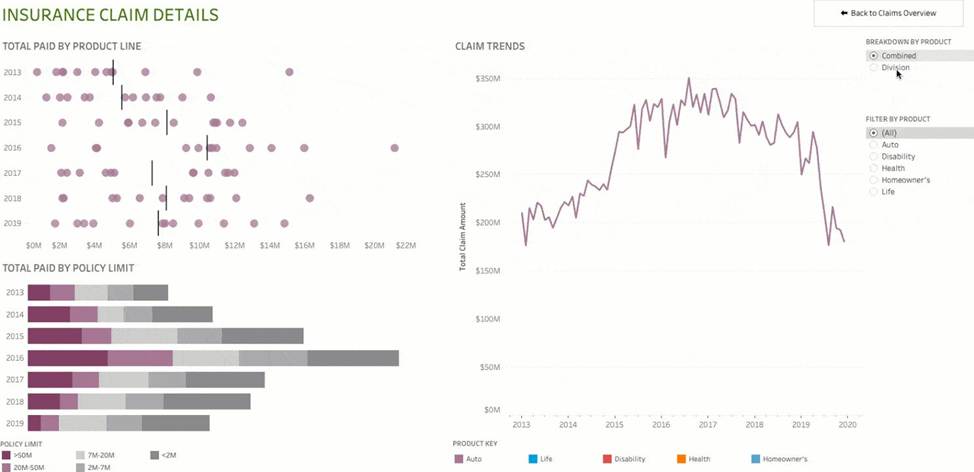
2) Dynamic Parameters:
Say goodbye to republishing workbooks with parameters every time the underlying data changes. Set your parameter once, and Tableau will automatically update the parameter’s list of values every time someone opens the workbook.
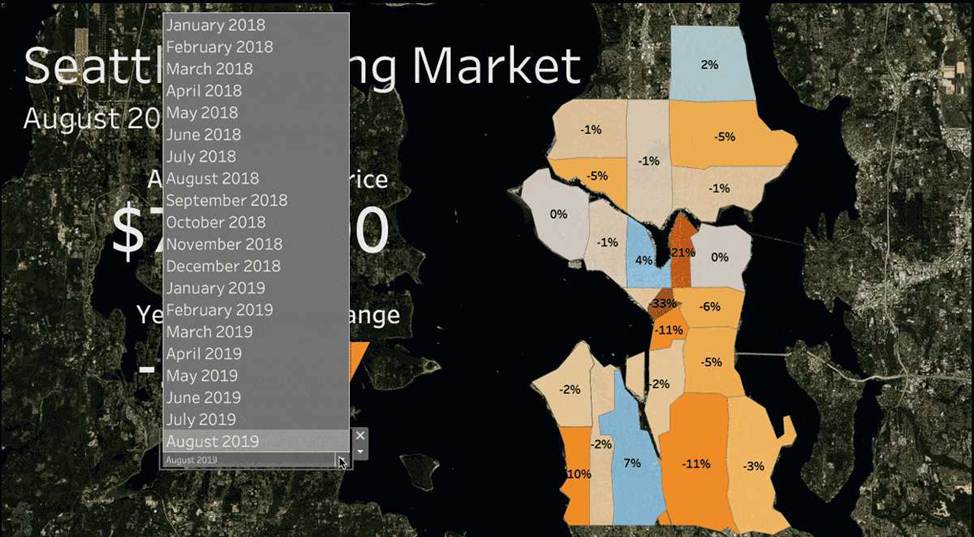
3) Buffer Calculations:
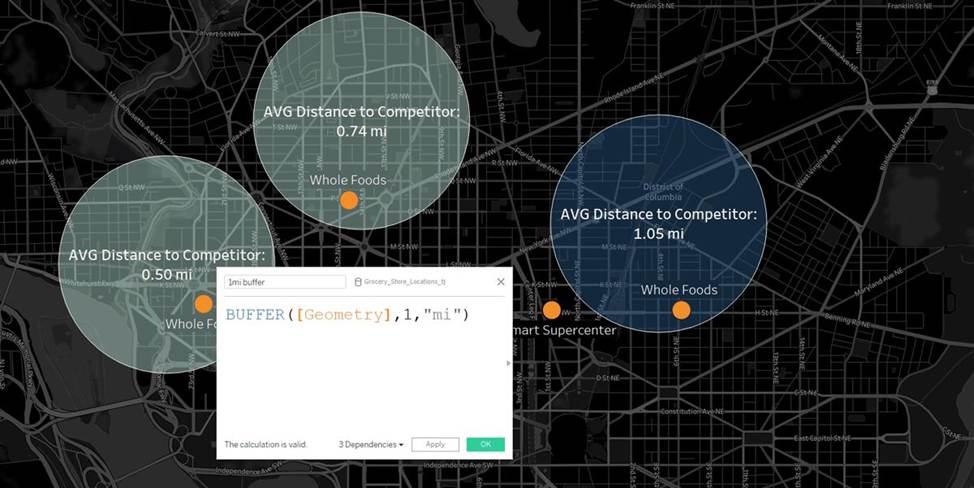
Buffer calculations allow you to visualize the distance around point locations. Give Tableau three parameters―location, distance, and a unit of measure―and a buffer, or boundary is instantly created. Answering complex spatial questions becomes easier than ever before―visualize what properties are within 200 meters of a proposed transit site, or how many competitors’ stores are within 1 mile of their store, and more.
정답:
Explanation:
According to the official Tableau documentation:
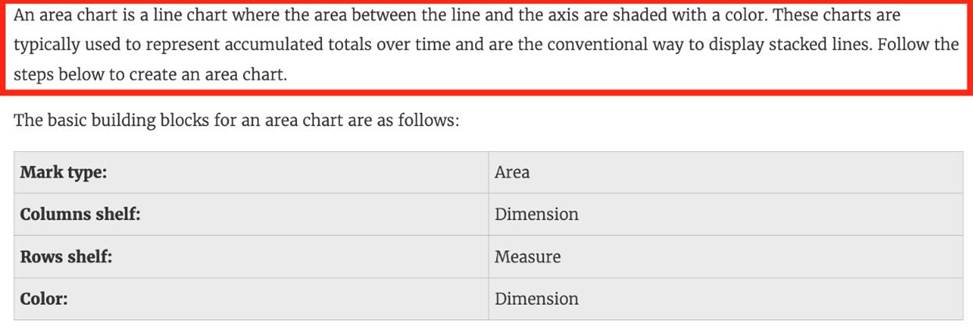
An example of an area chart is shown below:
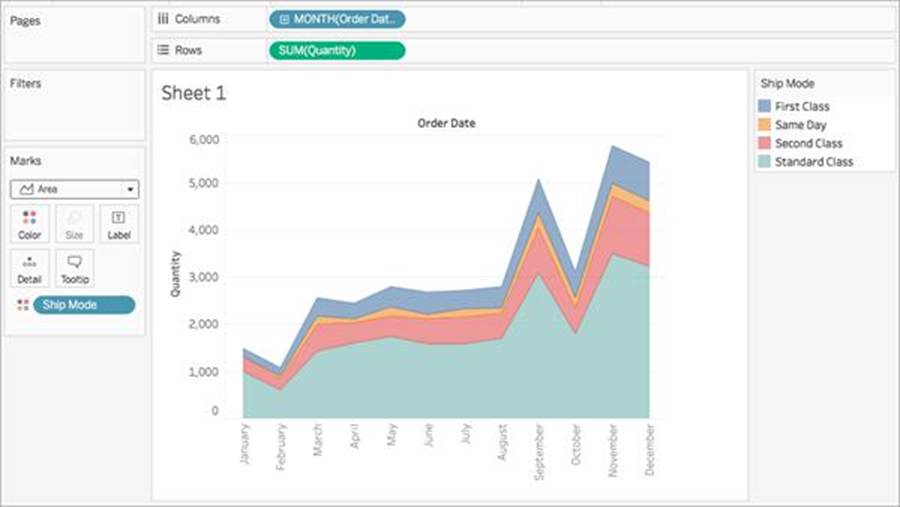
정답:
Explanation:
Presently, there is no official way to connect your data in Firebase directly with Tableau Desktop.
A workaround however can be to export your Firebase data into Google BigQuery, and then connect it to Tableau Desktop.
But then again, it is a workaround and not an official out-of-the-box solution.
The following are the available Data sources available as of now:
1) Server
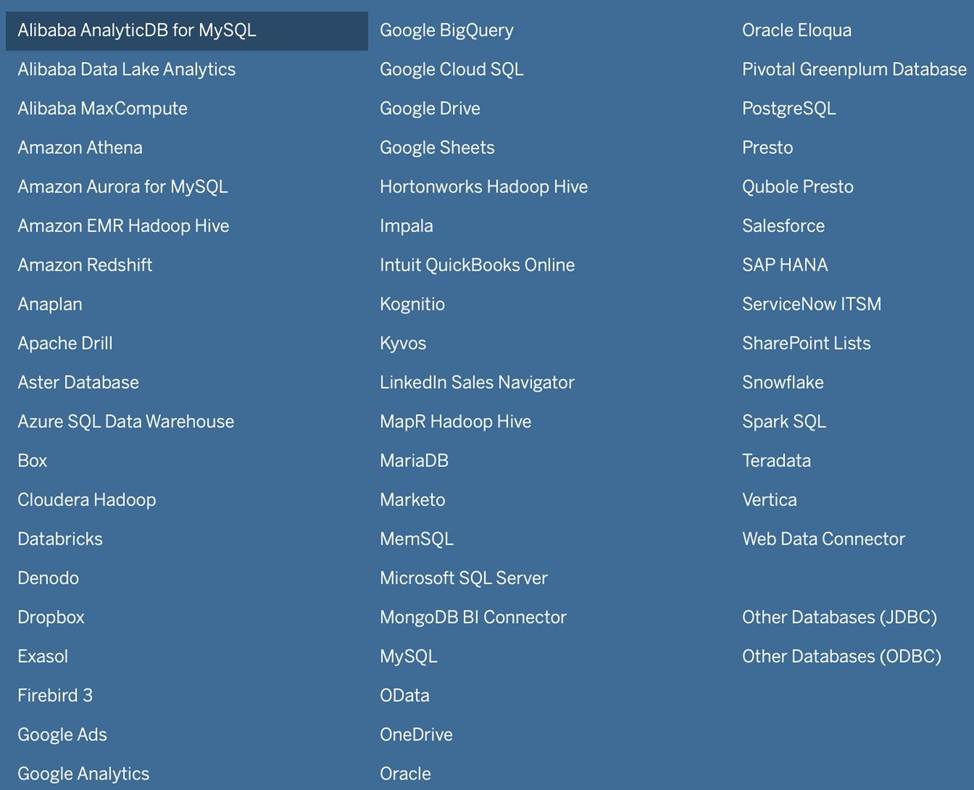
2) File
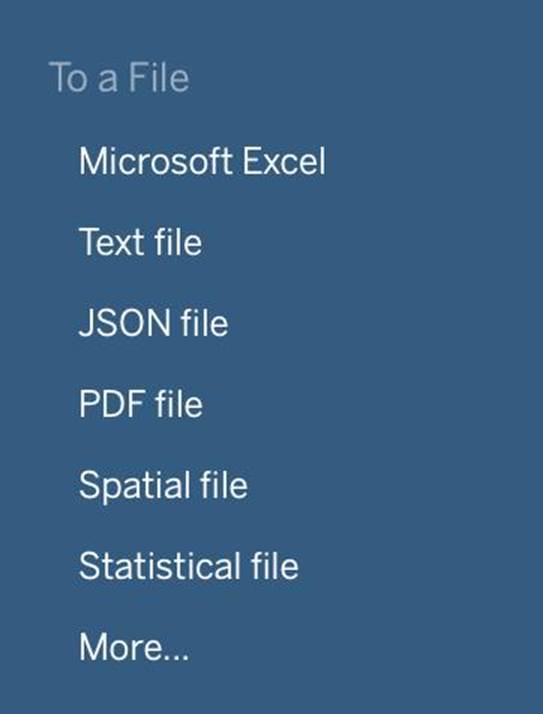
정답:
Explanation:
When users connect to Tableau, the data fields in their data set are automatically assigned a role and a type.
Role can be of the following two types:
1) Dimension
2) Measure
Type can be of the following :
1) String
2) Number
3) Geographic
4) Boolean
5) Date
6) Date and Time
정답:
Explanation:
According to Tableau's order of operations, the Extract filter is right at the top of the hierarchy. The data filtered in the Extract is then passed on to what we see in the Data Pane.
See below:
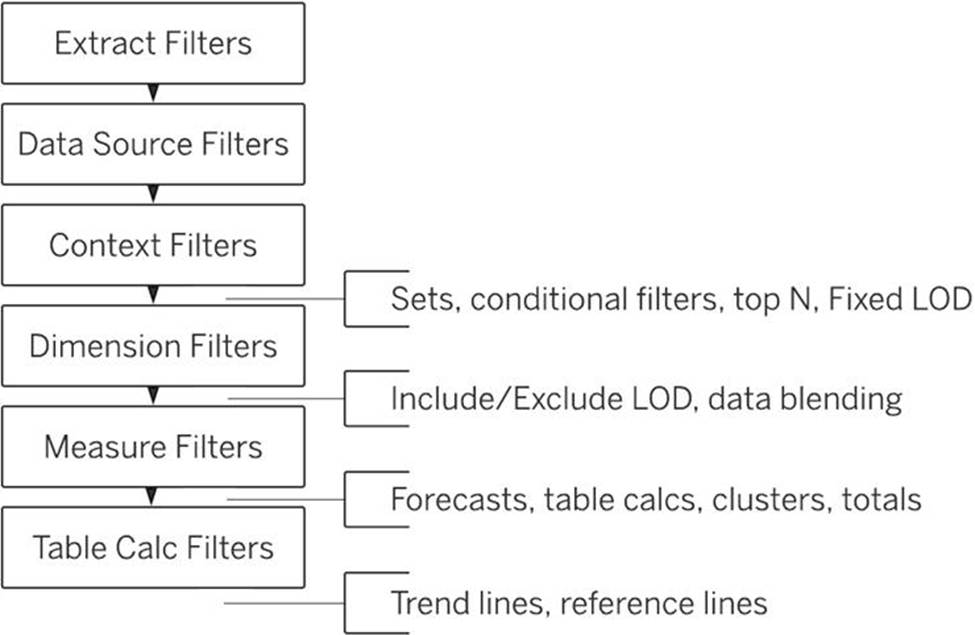
Reference: https://help.tableau.com/current/pro/desktop/en-us/order_of_operations.htm
정답:
Explanation:
Upon clicking on a filter, we see the following options:
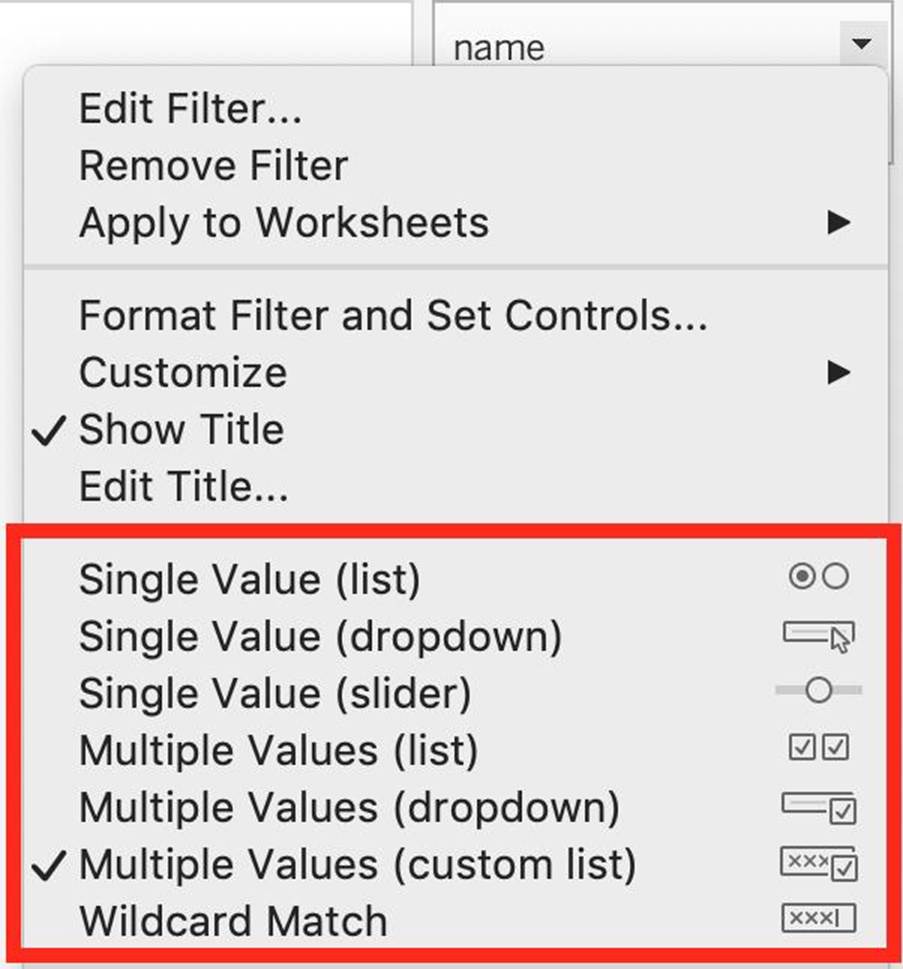
Clearly, Regex Match is not one of these options!